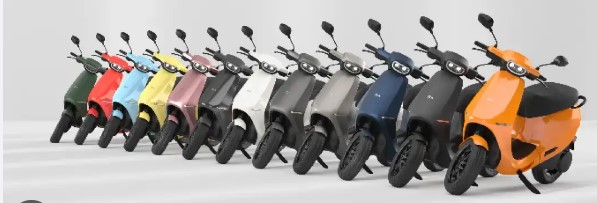
(Photo : olaelectric.com)
- Ola Electric's shares hit an all-time low, falling below its IPO price due to weak sales and poor service.
- The company's shares have slipped almost 50% from its highest level, with experts advising investors to stay away.
- Ola Electric's decline is attributed to weak sales figures, poor service, and increasing competition in the electric two-wheeler sector.
- The company's future performance will be closely watched as it navigates these challenges and attempts to regain investor confidence and market share.
In a significant development, Ola Electric, a prominent player in the electric two-wheeler sector, saw its shares plummet to an all-time low, dipping below its Initial Public Offering (IPO) price for the first time since its listing. The shares, which were listed on the stock market in August this year, opened with a decline on Tuesday, and during the trading session, the stock hit an all-time low of Rs 74.84. By noon, Ola Electric shares were down 3 per cent at Rs 75.25.
The company's shares had seen a sharp rally post-listing, touching an all-time high of Rs 157.40 before beginning a steep fall. The stock has now slipped almost 50 per cent from its highest level. Market experts suggest that if Ola's stock remains below its IPO price of Rs 76 for a few days, it may see a further decline due to selling by institutional and retail investors. They advise investors to stay away from this stock due to its continued weakness and instead invest in companies with strong fundamentals.
Weak Sales Figures and Poor Service
The decline in Ola Electric's shares is attributed to the company's weak sales figures and poor service. According to data from the government portal Vahan, the company sold 24,665 electric scooters in September, a decrease from 27,857 in August. The falling market share of Ola Electric is due to increasing competition in the market, with big auto companies also trying to establish their foothold in the electric two-wheeler sector.
Customers have reported numerous problems with Ola Electric's EV, including issues related to software, hardware, and service centres. The company's flagship S1 series EV scooter has become a nightmare for hundreds of customers who are consistently facing issues like malfunctioning hardware and glitches in software. Spare parts are hard to come by, resulting in inordinate delays in repairs.
Financial Performance and Future Prospects
The company's consolidated net loss widened to Rs 347 crore in the April-June quarter (Q1 FY25) from Rs 267 crore in the year-ago quarter. As of August 8, 2024, promoters held a 36.78 per cent stake in the E2W player. The company's experience producing EVs is really short. Whether they operate at a holding company level or as subsidiaries, there is no guarantee that they will be successful or cost-effective in the future.
The E2W industry in India is predicted to grow at a CAGR of 11% to reach a size of US$35 billion ( ₹2.8 trillion) to US$45 billion ( ₹3.6 trillion) in Fiscal 2028. E2W penetration in India is predicted to increase from roughly 5.4% of domestic 2W registrations in Fiscal 2024 to 41-56% of domestic 2W sales volume by Fiscal 2028. Moreover, areas such as SE Asia, LATAM, and Africa provide a substantial export potential for Indian E2W OEMs.
* This is a contributed article and this content does not necessarily represent the views of btin.co.in









